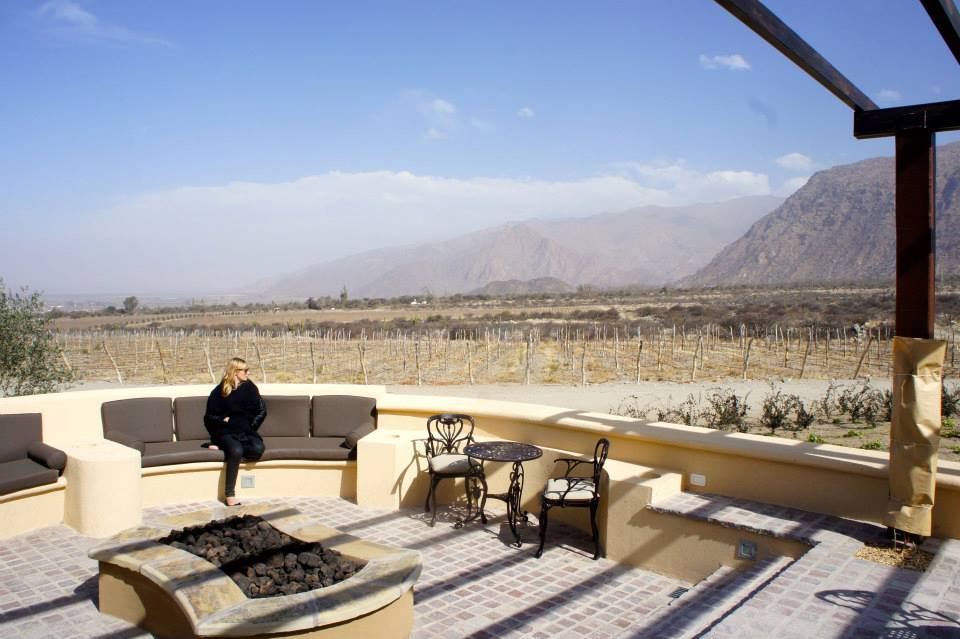My first introduction to Salta was through the amazing and unique Torrontes wine (which is Argentina’s Signature white grape variety) but on a recent trip to check on the current vintage I discovered there is much more to this high altitude oasis.
Located in the North West of Argentina near the borders of Peru, Chili and Bolivia, visiting the province of Salta is like taking a trip back in time. Both in the rugged landscape and the Incan influence which dominated South America before the Europeans arrived. Apart from the amazing vineyards which are some of the highest in the world (I’ll get to them in a minute) there is a lot to do in and around Salta, so if you’re planning to visit you should take at least a few days.
Getting there
Flying: We flew into Salta City via Buenos Aires, which was about a 2 hour flight..
Bus: Many people come to Salta by bus on their way too or from Bolivia and Peru. Argentina has some of the best busses in the world so don’t let the distances involved put you off. Most busses are fairly cheap and the premium cabins have large seats that fully recline, entertainment, food and wifi. Cata and Via Bariloche have always been good for me.
Wine – The home of Torrontes
Torrontes is a very unusual grape. It is unusual mainly because it smells nothing like it tastes and so is often branded “the liar”. With a big floral bouquet of jasmine and tropical fruits you expect something sweet but most are made in a bone dry style. The reason for this is largely put down to the unique growing conditions of Salta. At up to 3000m altitude Salta has the highest vineyards in the world. Salta also has over 300 sunny days a year and less the 200mm of rain with huge diurnal variation (temperature swings) between night and day. Whilst we were there it was 28 degrees during the day and -4 at night! What all this means is long ripening, intense flavors and the ability to maintain natural acidity. If you have never heard of Torrontes before that’s probably because it is native to Argentina and not grown anywhere else in the world. Whilst Torrontes is grown in other parts of Argentina, grapes grown in Salta are usually considered to be the best. If you want to try an amazing example of a Torrontes from Salta I recommend the Tomero Torrontes.
Other: Whilst Torrontes is definitely the star of the show in Salta they also produce many other varietals. With the amazing growing conditions wines here tend to be very concentrated and floral and it’s quite amazing to see the difference the unique terroir makes to the wines. Briefly the following wines are what i think Salta does best
- Malbec: Of course, it’s Argentina’s national grape. Although most famously found in Mendoza it’s quite interesting to see the difference the altitude makes.
- Tannat: Quite a rare grape but it has really found it’s home in here. I think you will be seeing a lot more of it in the future. Named after it’s naturally occurring high tannin levels, the wines here are well balanced from their long hang time and concentrated fruits.
Food
The food in Salta in some of the best in Argentina with more of the Peruvian influence coming through. My highlights were some of the best empanadas in South America, Humitas (kindof like a tamale) and locro the local stew. Salta is also one of the few places in Argentina where they use chili in their cooking which matches perfectly with the local drop Torrontes. We ate at a place recommended to us by a local called Doña Salta and they had amazing local food. Also a number of places make ice-creams using the local wines. Again the Torrontes is my pick.
What to do
Step 1: Hire a car. (airport or in town)
Step 2: Hit the Road
There are some amazing drives and you will find yourself constantly pulling over to marvel at the amazing landscapes. Most people recommended hiring 4×4’s but we were fine with a small car which was sometimes a blessing on the skinny mountain roads.
There are basically two loops you can do to take in most of the sites which are centered around Salta City. For both I would recommend staying at least a night on the road as there is a fair bit of driving and a lot to take in.
Salta City:
There are plenty of places to stay in the city but I would limit my stay in the city to a day as you get acclimatised and then get exploring.
In town there is also a beautiful village square which is a nice place to enjoy the sunshine. In the square is an Incan museum which is worth a visit and has great information on Incan culture in English that I didn’t find much of in Peru. They also have the remains of a few Incan mummies found in the area which are cool but kinda creepy.
Loop 1 – JuJuy
This trip is as much about the journey as it is about the destination with some of the most incredible scenery I have seen. This area has so many different landscapes I won’t even try and describe them. The accompanying photos do it little justice.
There are two routes you can take to get to Jujuy. The guy renting the car described the scenic route by moving his hand like a snake sliding through grass. This was pretty accurate. It’s about a two hour drive through winding mountains cliffs with a road about 1.5 car widths wide. It was at this point that we were glad we went with the small car option. In saying that the drive was spectacular and well worth it for at least one-way of the drive. If you have the opportunity I think the drive would be incredible on a motorbike.
Once through the lush mountains you will arrive in more of a martian dessert landscape with hills of 7 different colours. Stop off in the town of Purmamarca where you can get a great view of the mountains and grab some refreshments. From here there is an optional trip to see the Salinas Grandes (salt flats). If you have not seen the salt flats before it is quite a sight. But first you have to drive up some more crazy switchbacks. Peaking at about 4000m altitude you then wind back down (slightly) to a flat white wonderland.
After all the driving you will probably be exhausted. There are plenty of options to stay on the route. Ranging from camping to hostels to fancy spas. We ended up staying in a small hotel in Purmamarca with amazing views of the mountains and even a personal sauna in the room. Great for relaxing after a day driving and only about $50 USD a night.
Next stop is to Humuarca which is a really cool little town in the mountains. It had a really laid back vibe and I can imagine travellers getting lost here for a few days or weeks. The town is also home to the museo arquelogico “dr Eduardo Casanova” which has a good exhibit on the history of the cultures of the northwest of Argentina (and Bolivia and Peru) dating from an early group of hunter to the Inca empire right through to the Spanish conquest.
Loop 2 – Cafayate – a wine paradise
Again this route is all about the scenery but has the bonus of super high altitude wineries (some 3000m+) at the end to quench your thirst.
After passing through amazing rock formations, ravines and lots of red rock,s you emerge into a green oasis that is Cafayate. It really is like driving into a lost world. If I had to pick a spot to hide an oasis with great wine and food (and even a golf course) this would be it. You can’t really describe how out of place it seems. Thank god for the Incans and their irrigation technologies!
If you’re in Cafayate it really is all about the wine. There are four main regions here; Cafayate (main), Molinos, San Carlos and Cachi.
There are only about 26 major wineries but lots of grapes are gown here for wineries with operations in other regions. This is because nearly all grapes grown in Salta are of high quality, especially the Torrontes which is its spiritual home.
Visiting Vineyards:
One great advantage of Salta is that most vineyards are located pretty close to the town with some even being in the town so you don’t have to drive to far.
Some of my favourites include:
- Bodega el Esteco – This is one of the oldest wineries in Argentina. It also has an amazing old hotel on site. It is also one of the biggest wineries in Salta so you will see signs for it everywhere! Ruta nacional 68 y Ruta nacional 40, Cafayate
- Bodega Nanni – small production organic winery in the center of town. Great for lunch Silverio Chavarría 151, Cafayate
- Piatelli Vineyards – One of the newest wineries in Salta, very modern making super premium wines, has a great restaurant. Also has a winery in Mendoza.
- Bodega Etchart – Good value wines Ruta Nacional 40 Km. 1047, Cafayate
- La estancia de Cafayate – fairly new project which encompasses vineyard, 18 hole golf course and polo grounds.
- San Pedro de Yacochuya, Finca Yacochuya, Cafayate
Around Town:
Most activity in Cafayate revolves around eating and drinking. The main square is where you will find most of the restaurants although a lot of vineyards also have restaurants that you can have lunch at. Be sure to eat as many panamas as you can and check out Chutos wine bar for a personalized flight of wines from the region with sommelier Chuto!
I hope you enjoy your visit and if you have any questions or comments please let me know!

